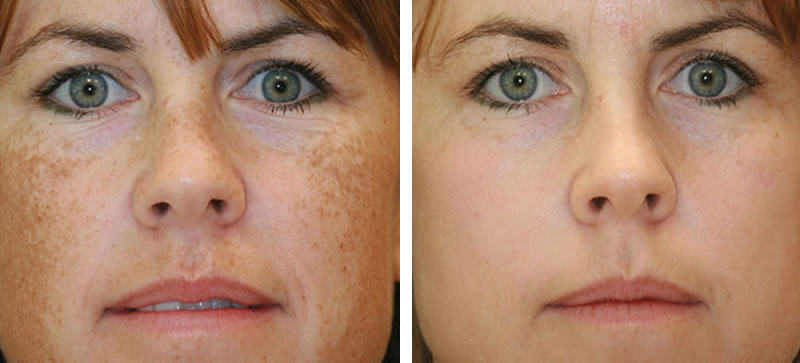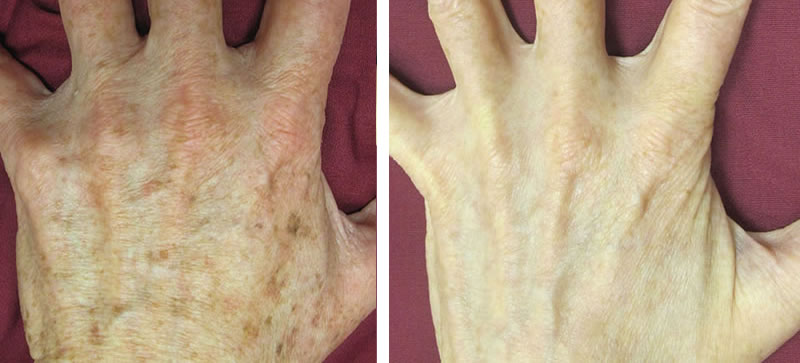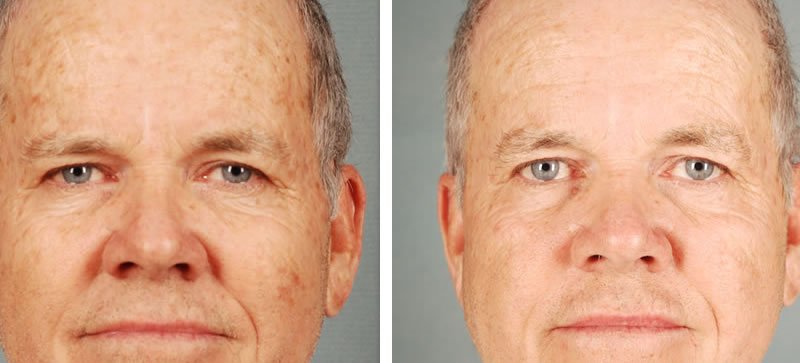Photo-Rejuvenation
Photo-rejuvenation
Known as the 'Non-surgical facelift', this treatment targets many concerns in the one treatment-collagen loss (wrinkles), telangiectasis (broken capillaries), rosacea, pigmentation (sun damage,freckling & melasma), acne, large open pores, scars as well as lightening and brightening the skin. It also reduces redness and stimulates collagen growth -firming and tightening the skin approximately 3 to 4mm. The collagen takes 12 weeks to fully develop and lasts approximately 2 years. The main benefit is that there is very little and in most cases, no down time after the treatments. Treatment of the whole face takes approximately 20 minutes and the face & neck about 30 minutes.
Treatments
Pretreating the skin with a medical prescription resurfacing cream for 3 weeks prior to your first treatment is highly recommended. Research has shown that resurfacing the skin enables better light penetrative resulting in a much more effective treatment. After a series of 3 to 5 initial treatments which are sheduled 3 to 4 weeks apart, only 2 to 4 are required annually to maintain bright and health looking skin. Packages available!
Photorejuvenation treatments can be substantially further enhanced when used in conjuction with;
- Age Intervention Regeneration booster: telemerase enzyme, TGF Beta 1, skin growth factors, antioxidants and peptides. This technology was awarded the Nobel Prize for Telomere and Telomerase research! See before and after photos at bottom of Jan Marini Skin Research page.
- Retinol Plus MD-Dermatologist formula (medical prescription only): the most aggressive levels of stabilized all-tans-retinol PLUS anti-ageing and collagen boosting peptides, antioxidants, hydrators and skin soothing agents. See before and after photos at bottom of Jan Marini Skin Research page.
- Bioclear Cream: Dermatologist formula contains three hydroxyacids which works as an exfoliant, resurfacing the skin giving skin a smoother, brighter, dewy complexion.
- C-ESTA & DMAE complex: ascorbital palmitate and Dimethyl amino ethanol, a potent antioxidant and acetylcholine precursor, zinc and pyridoxine. Strengthens blood vessel walls and connective tissue, firming skin, lightening pigment and reducing redness/capillaries.
Consistent and diligent use of physical and chemical sun-protection measures using a high end UVA & UVB sunblock EVERY DAY cannot be emphasised enough to protect skin from further damage from UV light. This will substantially improve your skin over time and it is accumulative.
Accelerated skin ageing that is caused by cumulative sun exposure is a complex reactive process. This process consists of countless changes that involve damaged DNA biochemistry, breakdown of cell membranes and destructive effects on enzymes, proteins and amino acids, and abnormal changes to the immune system that are essential for information processing necessary for health youthful skin.
Sun damage and ageing
Skin ageing is a complex and varied process. Many factors influence how a particular individual's face will age. Biological ageing due to heredity generally does not occur until the age of 70 or later and consists primarily of a loss of tissue as well as receding bone structure that result in a gaunt, sagging appearance.
It is estimated that as much as 96% of the visible signs of ageing is the result of accumulated sun damage. These include; fine lines, wrinkles, textural changes, sun spots (solar lentigines), elastosis (loss of elasticity), coarse dryness, telangiectasia/poikiloderma/spider veins/broken capillaries (blood vessel damage), skin growths, breakdown of collagen and yellow or grey skin hues due to a decrease in the small blood vessels that provide circulation to the surface of the skin. Collectively, these changes caused by accummulated sun exposure can be grouped into a category often referred to as 'quality of the skin'.
Improving the quality of your skin


FACE

HANDS

